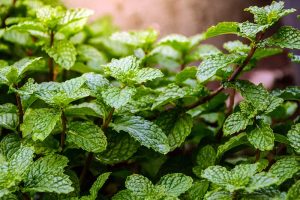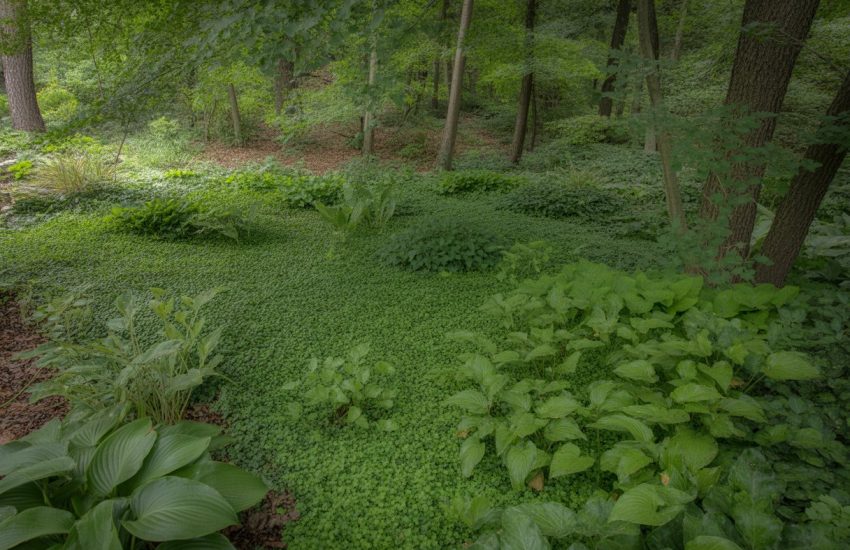10 Causes for Mint Leaves Turning Yellow
Although mint is an easy-to-grow herb, it can be affected by different spots of different colors. The most common are the yellow ones. Most gardeners love growing this plant because of its fast-growing rate; its leaves; are also flavorful and have a soothing fragrance. Considering a favorable condition for growth will save you the menace of mint leaves turning yellow.

The common causes for tarnishing the color of this plant are diseases, pests, and water imbalances. However, it is possible to implement solutions that can resolve these troubles. The main recommendation is to grow this plant in an ideal location and condition, and it will be healthy. The below piece is a guide to show you the leading causes of mint leaves turning yellow and the possible solutions.
Causes and Solutions for Mint Leaves Turning Yellow
1. Insufficient Sunlight
Photosynthesis is the central aspect of growth in plants; therefore, your mint plants must be exposed to sunlight. The sun helps the plants to build functional foods. Photosynthesis is the main component of chlorophyll, the green coloring matter in plants, which means that the leaves can quickly turn yellow when there is no sun.
Solution
• Ensure that your garden has full access to sunlight. If your mints are indoors, ensure that you use transparent windows to allow the sun inside.
• If the plants are growing in a garden, then there is a possibility of trees that can block the sun from reaching your mints. Trim the overhanging branches or transplant your crops to a sunny location.
• You can use the artificial grow light to ensure your mints are in optimum light condition. This light’s ability to enable photosynthesis is similar to the natural sun.
2. Insects Attack
Mint plants can experience problems if insects attack them. They are mainly attacked by aphids which result in the plants losing their green component and turn yellow. Another effect of aphids is curling, fading on the beneath, and wrinkling the leaves. The aphid insects have fed on the mints if you notice these features.
The effect occurs because these insects habitually suck all the nutrients from the plants, leaving them with fading characteristics. However, some measures can help in preventing this situation. They include;
• Spraying the mint leaves with insecticides to scare and kill the aphids.
• You can use organic insecticides together with a mixture of soap solutions. Your mints’ leaves might regain their chlorophyll.
3. The Quality of Soil and Water
The quality of these two components is vital for the growth of any plant. It is what feeds the plants with the required nutrients. If the mint leaves have a deficiency in nutrients, then they will start showing the yellowish coloring. Mint leaves usually do well in soil rich in nitrogen. Hard water also harms the health of your mint plants. Hard water results in salts and calcium around the plant’s roots, depriving the mint leaves of getting enough water.
It is your responsibility as the gardener to choose a good location with adequate water and rich nutrients before growing the mints for them to do better.
4. Mint Rust and Fungal Attack
Rust fungi can quickly yellow the mint leaves. When rust fungi attack a mint plant, it usually turns yellow beneath the leaves. Some spots typically go to the extent of bright orange. The most significant cause of mint rust fungi is the death of the mint leaves tissues. Sometimes, these conditions extend to falling the leaves off and have the effect of distortion of the newly planted mint plants.
A fungal attack called verticillium wilt usually attacks the mint leaves; it extends its effects to the soil, discoloring the ground and resulting in the whole plant’s death.
Solutions to this condition include
• The most effective way of dealing with mint rust fungus is clearing out the section affected by the condition.
• Replanting the healthy plants in a safer location after removing them from the fungus-manifested area is also ideal.
• You can regulate the fungal infection by watering the mint plants near the roots. If the leaves remain dry, there are minimal possibilities for a fungal infection.
5. Overwatering
It is a common problem that is likely to make your mint leaves yellow. It would help if you were vigilant with the amount of water you sprinkle on your mints. Overwatering primarily affects mints planted in pots. When you see yellow spots on your plants and you had previously overwatered them, there is a possibility of another condition called root rot.
Root rot is an inevitable condition resulting from overwatering plants. Mint plants require regulated amounts of water for them to do well. You can identify that you have overwatered your plants if there is a presence of algae around your garden. Water also causes diseases such as powdery mildews, mint rust, and verticillium wilt.
Solution to overwatering
• If you have already overwatered your mint plants, transplant them to a new location. If you are using pots, ensure they contain holes at the bottom.
• Add small pebbles underneath the pot you have planted your mint for better drainage.
• Compost or organic matter is habitually good for drainage. Consider adding it to the soil.
• If the soil you’re using contains a lot of clay, it indicates no drainage. Plant your mint in fine loam soil for better growth.
6. Underwatering
Under watering may also turn the leaves of your mints to yellow. You can quickly identify if the plant does not get enough water or if there is wilting—other indications of underwatering include pale, dusty, and dull leaves. Ensure you check the soil near the plant. Dig a hole to check whether the water reaches the bottom because it may stick at the top.
Fixing underwatering
Among all the causes of yellowing of mint leaves, under watering is the easiest to fix. As long as the mint leaves have not entirely lost the green color, you can water them to restore their health. If you have a potted plant, fix underwatering by pouring enough water on the pot. The excess water will escape through the small holes drilled beneath the container.
Another ideal option is submerging the entire pot in water. This method will require you to construct a sound drainage system because the water might be excess if there is poor drainage.
How to water mint plants
Unlike other drought-tolerant plants such as lavender and basil, mint plants require daily watering. It is the main component that enables this plant to thrive. You can establish a schedule for watering your mint plants in the mornings and checking whether the soil is still moist in the evenings. However, if you live in too hot areas, consider watering your mint plant at least twice a day.
7. Nutrient Deficiencies
Many nutrients are needed for a mint plant to grow healthy. Apart from turning the mint leaves yellow, lacking enough nutrients can cause the leaves to turn brown and eventually fall off. It is the most common condition that causes yellowing because most people are unaware that mint plants need nutrients for survival. Nitrogen deficiency will result in the yellowing of the mint leaves. Lack of or low presence of potassium will also result in the tips and edges of your mint leaves turning yellow.
Solution
• You must assess the mint leaves to identify the missing nutrients. You can apply fertilizer with the missing nutrient to fix this condition.
• If you do not identify the specific nutrient that is missing, use the purpose formula. It will help the mint leaves to regain their color.
8. Powdery Mildew
You can identify if your mint leaves suffer from powdery mildew by flipping them. If you notice any powdery or grayish fungi beneath the leaves, it is essential to fix this situation. It is because of the ability of the powdery mildew to kill the mint plants.
Solution
• Use the fungicides to get rid of the infected mints. Spraying the surrounding areas will help to reduce the possibility of this infection.
• Inoculate the soil with a fungicide to prevent the reverting of this issue.
9. Using Too Small Containers
The mint plant has fiber roots. It means they need space for spreading out, and if a small pot is used, the roots will not spread well. The plant will lack enough water and nutrients, so the leaves will eventually turn yellow.
You will know if the mint plant is not pot bound if you see roots emerging from the drainage holes. You can start with a six-inch pot but transfer it to a 20-inch pot when the plant grows. The small containers will also retard the growth of your mint plant.
10. Verticulium Wilt
It is a severe fungal disease that can be present in the soil and can spread to the plants through roots. After scrutinizing all other possibilities, you might wonder why the mint leaves are turning yellow. Well, it might have been caused by the verticillium wilt. This condition is not easy to identify because you must have considered all other causes of yellowing.
You can identify the symptoms of this disease during spring or when there is a mild temperature. The mint leaves also have a possibility of turning brown and falling off if affected by verticillium wilt. Also, you can identify these symptoms on one side of the plant when the other is entirely healthy. One can quickly identify this disease in trees and shrubs, but it is hard to notice its symptoms in a herb such as the mint.
Verticillium wilt is incurable, so if it arises as the cause of yellowing on your mint leaves, you should remove the plant. Ensure not to plant another mint before solarizing the soil which gave this condition.
Other Viral Diseases
Cucumber mosaic virus also has the effect of turning the vegetable leaves yellow. This condition is not usual, but its effects are adverse. Aphid insects often spread the cucumber mosaic virus.
Solution
There are no remedies for cucumber mosaic virus, but it is preventable. If you keep away the aphids and place fungicide underneath the soil, this virus will not attack your mints.
Other Concerns about the Yellowing of Mint Leaves
How does an overwatered mint looks?
An overwatered mint usually appears droopy with yellow leaves and weak stems. Such a plant is prone to powdery mildew, stem and root rot, and viral and fungal infections.
Can yellow leaves regain their original color?
The leaves of a mint cannot turn green unless it is a nutrient deficiency. You can supply the plant with nutrients using fertilizers if it is the cause of yellow leaves.
Why are my mint leaves turning yellow during winter?
During winter, ensure that you maintain the optimal conditions for the proper growth of your mint plant. Ensure there is light, enough water, and nutrients; your plants will maintain their original color during growth.
Final Word
Mint leaves being hardy does not mean they don’t require care and attention. If you maintain the health of this plant, its leave will flourish and give you a good harvest. You must ensure that all the conditions, including the sunlight and the plant’s watering, are optimal. However, if the mint leaves have already turned yellow, then this guide will assist you in restoring the plant’s health. It would be best if you did a careful evaluation to identify the reason behind the yellowing before implementing a viable solution. The key components that result in yellowing are lack of sunlight exposure, improper watering, deficiency of nutrients, and exposure to fungal and viral infections.


